Aluminum vs. Vinyl vs. Fiberglass Window: What’s Worth in Toronto?

Choosing windows in Toronto isn’t simple. Here winters bite, summers bake, wind off the lake tests frames and seals. Budgets matter. So does the look.
This guide helps you pick what’s worth it. Aluminum, Vinyl, Fiberglass. We compare them for GTA homes and condos.
Quick rule of thumb:
Want a modern, slim look and big glass? Consider Thermally broken Aluminum.
Want a long life and stable performance in all seasons? Consider Fiberglass.
Toronto: Climate, Codes, Neighborhoods
Winters are cold in Toronto. Summers get hot. And the swings are really hard.
So, more expansion/contraction cycles = more stress on frames and seals.
And, the Lake wind raises structural demands.
It is recommended to ask for tested air/water/structural ratings (PG/CSA), not just “good quality.”
What does that mean for windows?
Thermal movement matters. Materials that move a lot can stress corners and IGU seals.
Dark finishes heat up. Black frames get hot in the July sun. So, you have to make sure premium finishes + proper glass to control solar gain.
Energy expectations
Look for Low-E coatings, argon fill, and warm-edge spacers.
Low-E: thin coating that reflects heat.
Argon: gas between panes that slows heat transfer.
Warm-edge spacer: reduces edge-of-glass heat loss and condensation.
Double-pane fits many homes; triple-pane helps on noisy streets or comfort-critical rooms.
Note: triple is heavier; hardware and frames must support it.
Typical GTA housing
’50s–’70s brick bungalows/semi. Vinyl = best value. Fiberglass for front elevation upgrades.
’80s–2000s suburbs. Vinyl or Fiberglass. Match trims and siding/stucco transitions.
Downtown condos/lofts. Often Aluminum or Fiberglass. Slim profiles.
Reminder: confirm board rules on exterior color and grids.
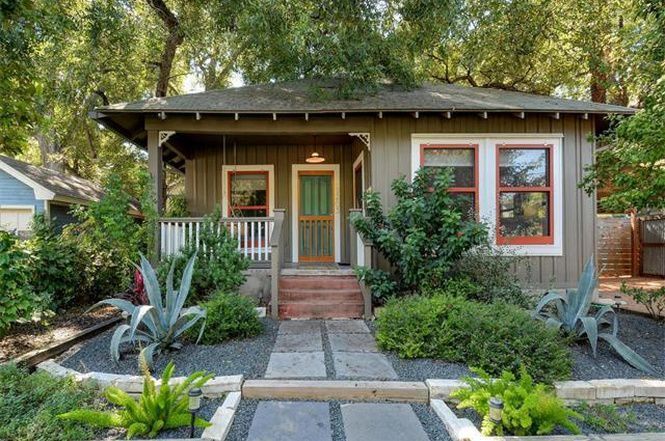
Materials Basics: What & Why
Aluminum
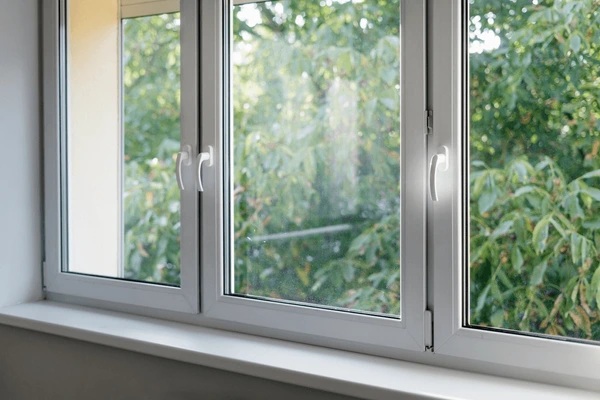
Aluminum frames use extruded metal profiles that are split by an insulating “thermal break.” The break separates the inside metal from the outside metal and reduces heat transfer.
Why it matters: its high strength allows narrow frames and very large panes without heavy reinforcement.
Thermal movement: ~23 × 10⁻⁶/°C (moderate).
Upsides:
- minimalist look;
- largest sizes;
- sharp, precise corners;
- premium finishes.
Premium finishes include powder-coat (rich color and durable) and anodized (metallic appearance with a very hard surface).
Watch-outs: In Toronto, Aluminum must be thermally broken to avoid cold frames and excess heat loss. The frame can still feel cooler to the touch, so the glass package does much of the energy work.
Best for: Modern designs, tall fixed windows, large sliders, and corner glass where slim sightlines and structural strength are priorities.
Vinyl
Vinyl frames use rigid PVC with multi-chamber profiles for insulation, drainage, and reinforcement. Reinforcements, often steel or fiberglass, help control flex in large or dark-colored units.
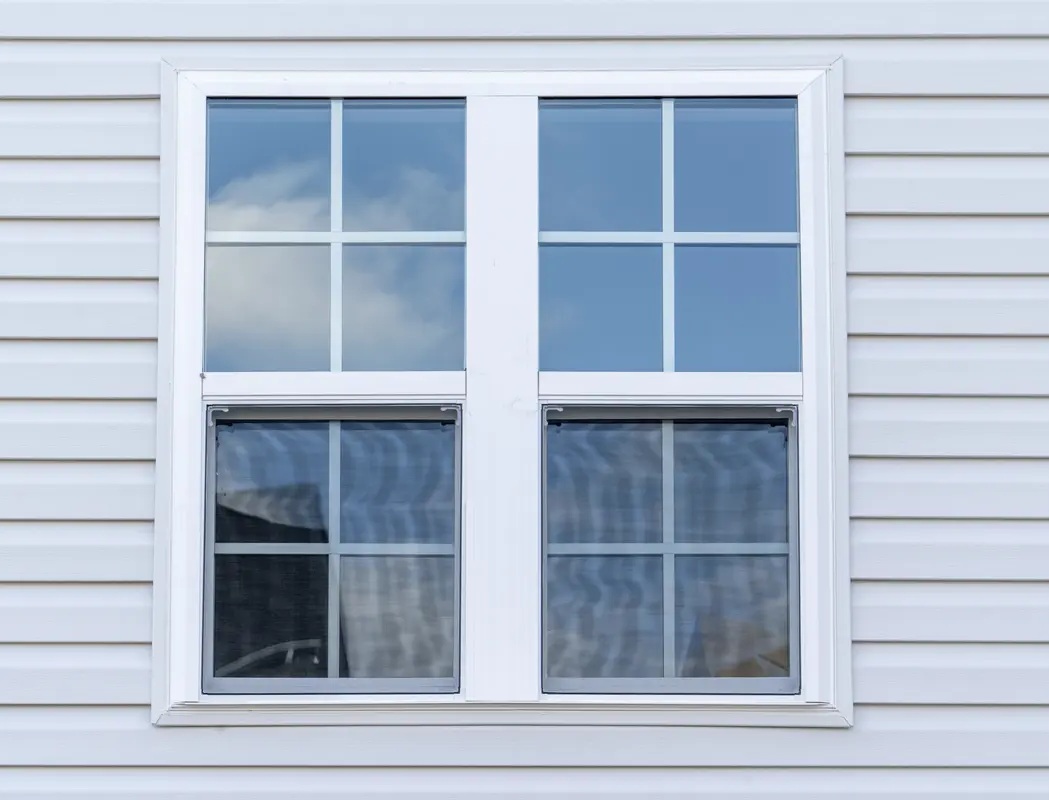
Why it matters: uPVC provides a naturally warm frame at the lowest cost.
Thermal movement: ~70–100 × 10⁻⁶/°C (higher).
Upsides: Vinyl offers the best price-to-performance ratio for most detached and semi-detached homes. It needs low maintenance and can easily hit good U-factor targets with the right glass.
Watch-outs: Frames are thicker than Aluminum, so sightlines are not as slim. Large, dark units can expand in summer heat; specify cap-stock exteriors and reinforcement to manage this.
Best for: value-driven replacements in detached/semi homes.
Fiberglass
Fiberglass frames are made from continuous glass fibers set in resin and pultruded into rigid profiles. This material matters because its expansion rate is close to glass, about 5–10 × 10⁻⁶/°C (glass is ~9 × 10⁻⁶/°C), which means less stress on seals and corners over time.
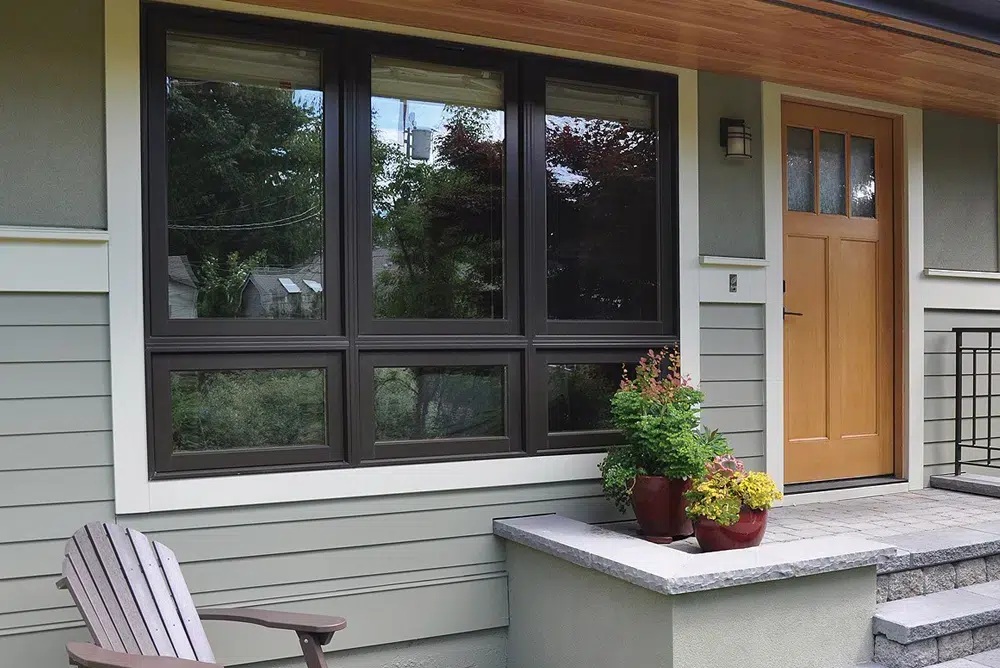
Upsides: Fiberglass is strong, stable, and efficient. It is paintable at the factory or in the field, and lighter colors run cooler in direct sun. It often provides a long service life with minimal distortion.
Watch-outs: It is more expensive than Vinyl and usually not as slim as Aluminum.
Best for: “Install once, forget it” buyers who want durability, energy performance, and stable operation through Toronto’s temperature swings without moving to thick frames.
Performance Comparison
Aluminum, Vinyl, and Fiberglass have their own strength zones. To be honest, I think all of these materials are suitable for Toronto. But, the choice can change depending on what you expect.
Energy (U-factor / ER)
Fiberglass and Vinyl usually achieve lower U-factors because their frames are naturally “warmer.” This makes it easier to meet Toronto comfort targets with standard Low-E glass and argon.
Thermally broken Aluminum can perform well when paired with higher-end glass (e.g., advanced Low-E, argon, warm-edge spacers, and,if needed, triple-pane)
Typical outcomes (Toronto, Low-E + argon, indicative only):
Vinyl / Fiberglass, double-pane: ~1.2–1.6 W/m²·K.
Thermally broken Aluminum, double-pane: ~1.6–2.0 W/m²·K.
With triple-pane: subtract ~0.3–0.5 W/m²·K.
Lower is better. Actual results depend on the exact frame system, glass package, and spacer.
Air / Water / Structural
Aluminum leads for strength and deflection control, especially on large or tall units. Fiberglass is also strong and stable. Vinyl can perform well on typical sizes, but large units generally need steel or fiberglass reinforcement.
What to ask: Request verified NAFS/CSA A440 (PG) ratings sized for your exposure (lakeshore, mid/high-rise, or corner lots) so the product matches your wind and water conditions.
Durability & Lifespan
- Longest stability: Fiberglass (very low expansion).
- High durability: Aluminum (finish quality matters).
- Great value life: Vinyl (protect dark colors with cap-stock).
Maintenance
- Lowest: Vinyl.
- Low: Fiberglass (can be repainted).
- Low: Aluminum (wash + periodic finish checks).
Noise (STC/OITC)
Frame matters less than glass.
Upgrade to laminated or acoustic IGUs for busy streets.
Expect ~3–5 STC points better than standard double-pane.
Condensation risk
Warmer frames help: Fiberglass / Vinyl.
Aluminum needs a good thermal break and warm-edge spacers.
Control indoor humidity in winter.
Finish & Color
Aluminum: widest palette; powder-coat or anodized.
Fiberglass: factory or field paintable.
Vinyl: solid colors; best longevity with cap-stock exteriors.
Typical GTA cost (relative)
$ (lowest): Vinyl [provides the best upfront value]
$$: Fiberglass (+~20–40% vs Vinyl)
$$–$$$: Aluminum (+~30–60% vs Vinyl; size/finish drive cost)
At-a-glance table
Factor | Aluminum | Vinyl (uPVC) | Fiberglass |
|---|---|---|---|
Energy potential | Good (with glass) | Very good | Very good–Excellent |
Sightlines | Slimmest | Thick | Slim–Moderate |
Max sizes | Largest | Moderate (reinforce) | Large |
Structural | Strongest | Good (reinforce) | Strong |
Maintenance | Low | Lowest | Low |
Finish options | Best | Limited (cap-stock) | Paintable |
Noise (with right glass) | Excellent | Excellent | Excellent |
Relative cost | $$–$$$ | $ | $$ |
Design & Aesthetics: Aluminum vs. Vinyl vs. Fiberglass Window

Sightlines
Aluminum gives the thinnest frames and the cleanest modern lines.
Fiberglass is slim to moderate and reads “quiet” on the wall.
Vinyl has thicker frames. It suits traditional trims and wider casings.
Style compatibility
Modern / minimal / big glass: Aluminum first; Fiberglass as an alternative.
Traditional brick bungalows: Vinyl for value; Fiberglass for a sharper profile.
Lofts and condos: Aluminum or Fiberglass to match façade systems.
Color & finish
Black exterior trend: All three can do black.
Aluminum: rich, durable powder-coat; or anodized metal look.
Fiberglass: paint to any custom color; lighter tones run cooler.
Vinyl: choose cap-stock black/dark for UV stability.
Interior finish:
Aluminum: painted/anodized; sleek.
Fiberglass: paintable to match trim.
Vinyl: color-through or foil/cap-stock options.
Grids and “steel-look”
For thin muntins and steel-look aesthetics, Aluminum performs best.
Fiberglass can mimic with applied grids.
Vinyl grids are thicker; choose carefully for proportion.
Hardware and feel
Aluminum often offers premium hardware and crisp corner joins.
Fiberglass feels solid and quiet when operating.
Vinyl offers the widest cost-effective hardware choices.
Glare, fade, and comfort
Use Low-E variants to tune daylight, solar gain, and color neutrality.
Dark frames get hotter; pair with quality glass to control heat and fading of interiors.
Size, Spans & Configurations
Big glass looks great, but size is always limited by structure, wind, weight, and hardware. Choose the frame system first, then design the layout around what it can safely carry.
Max sizes
Fixed picture windows:
Aluminum: largest spans; think tall or wide feature glass.
Fiberglass: large, but typically a step below Aluminum.
Vinyl: moderate; very large units need reinforcement or a different material.
Operable windows (casement/awning):
Aluminum supports larger sashes.
Fiberglass handles medium-large well.
Why size limits matter: Excess flex leads to poor sealing, hard operation, and water/air leaks. Stiffer frames keep gaskets aligned and hardware happy.
When spans get big
Expect more mullions or thicker profiles unless you use Aluminum.
Check wind loads (lakeshore, high-rise, corners).
Triple-pane adds weight; confirms hardware class and hinge capacity.
Smart configurations
Pair a big fixed picture window with flanking casements for ventilation and slim center sightlines.
Use awnings under fixed glass for discreet venting and rain protection.
Consider transoms and sidelites to stack height while keeping operables reasonable.
For corners, Aluminum enables butt-glazed or post-less looks in some systems.
Retrofit vs full-frame
Retrofit (insert): Faster and cleaner. It preserves interior finishes and minimizes disruption. You may see slightly less visible glass due to frame-within-frame. But, it depends on the situation.
Full-frame: Best for air/water sealing and long-term performance. It lets you reset flashing, sill pans, insulation, and vapor/air barriers, and correct any hidden damage or rot.
Cost & Lifetime Value
Upfront cost (relative, installed)
$ (lowest): Vinyl. Best price-to-comfort for most houses.
$$: Fiberglass. Usually ~20–40% higher than Vinyl.
$$–$$$: Aluminum. Usually ~30–60% higher than Vinyl. Very large sizes and premium finishes can add more.
What drives price up
Oversized units increase frame and glass costs, and they may require structural mullions. Triple-pane glass adds weight and price. Laminated or acoustic IGUs cost more but improve security and noise.
Custom colors, split finishes (different inside/out), and designer hardware also raise the number. Installation can add cost when walls need brick cutbacks, rot repair, or a full-frame replacement with sill pans and new flashing.
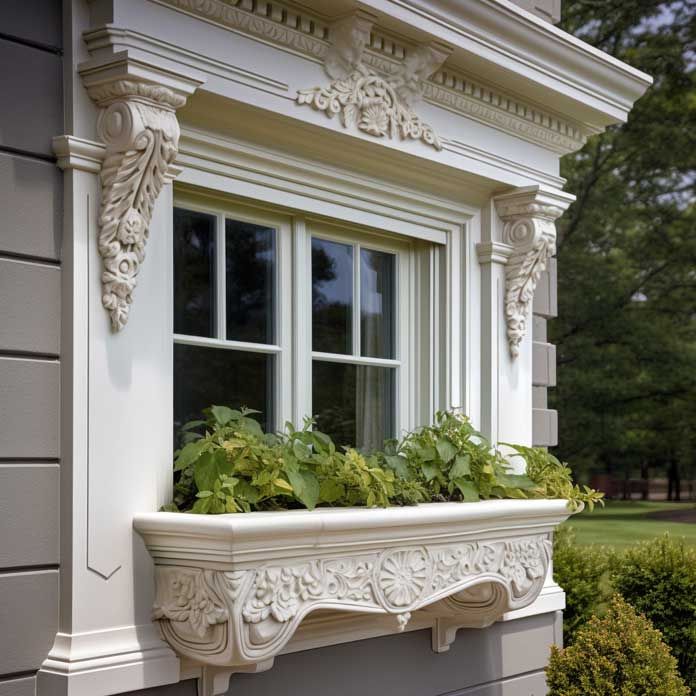
Lifetime costs to consider
Better glass and warmer frames reduce heat loss, which can lower winter bills and improve comfort. Replacing older, leaky windows with Low-E + argon is a noticeable upgrade in both comfort and drafts.
Finish care:
Vinyl: No painting is needed; periodic washing is enough.
Fiberglass: Factory coatings last a long time and can be repainted later if you change colors.
Aluminum: Powder-coat or anodized finishes are durable; plan on routine washing and occasional inspections.
Hardware and operation. Large or heavy sashes need higher-grade hinges and cranks. Cheap hardware costs more later.
Glass seals. All IGUs can fail after many years; warm-edge spacers, stable frames, and good installation help extend seal life.
Serviceability. Mainstream systems and standard sizes are easier to service or replace 10–20 years down the road.
Expected service life (typical, with good install and care)
Vinyl: 20–30+ years. Expect more movement on very dark, sun-exposed units if not cap-stocked/reinforced.
Fiberglass: 30–40+ years. Low expansion protects joins and seals.
Aluminum (thermally broken): 30–50+ years. Finish quality and coastal exposure matter.
Lead times (broad patterns)
Shortest: Vinyl.
Mid: Fiberglass.
Longest: Aluminum
Vinyl generally has the shortest lead times because it is widely produced in standard configurations. Fiberglass is mid-range, especially for factory-painted colors. Aluminum often has the longest lead times, particularly for custom colors, very large configurations, or special hardware. Actual timing will vary by season, production load, and the complexity of your order.
FAQs
Are aluminum windows too cold for Toronto winters?
Not if they are thermally broken and paired with Low-E, argon, and warm-edge spacers. The frame surface will feel cooler than Vinyl or Fiberglass, but overall efficiency can still meet targets.
Do black vinyl windows warp or fade?
Quality cap-stock exteriors resist UV and heat. Large or dark units should use reinforcement. Cheap, painted-black vinyl is risky; choose factory cap-stock instead.
Is triple-pane necessary in Toronto?
Not always. Double-pane Low-E + argon works for many homes. Use triple-pane for noise reduction, comfort in north-facing or large glass areas, and where energy targets are aggressive.
What is the difference between STC and OITC for noise?
STC rates mid/high frequencies. OITC captures low frequencies (traffic, streetcars). Laminated glass improves both, and often helps OITC more.
How long do these materials last?
With good installation and care: Vinyl 20–30+ years, Fiberglass 30–40+ years, Thermally broken Aluminum 30–50+ years. Glass seals are often the first service item.
Can I mix materials in one home?
Yes. Many owners choose Fiberglass or Aluminum on street-facing or large openings and Vinyl elsewhere for value. Match colors and profiles for a consistent look.
Will slim frames always save energy?
Slim frames improve looks and glass area, not energy by themselves. Efficiency comes from the glass package, spacers, and air-water-structural performance.
Is winter installation okay?
Yes. Crews use cold-weather sealants, protect openings, and control indoor temps. Proper tape/flashing and foam practices matter more than the season.
How do I prevent condensation?
Use warm-edge spacers, choose warmer frames (Vinyl/Fiberglass), and manage indoor humidity in winter (often ~30–40% RH, depending on outdoor temperature). Keep blinds slightly open to allow air flow.
What about condo rules?
Condo boards often require specific colors, grid patterns, and visible frame depths. Aluminum or Fiberglass usually align better with façade systems. Get approval before ordering.
What should I check on the quote?
Material and series name. Exact glass spec (Low-E type, argon, spacer). PG/CSA rating appropriate for your exposure. Hardware model. Finish. Install scope (retrofit vs full-frame). Warranty and service terms.
Are there rebates in Ontario?
Programs change. Check current Ontario/utility incentives before you buy. We can review options at measure and point you to the latest programs.
Which one gives the best resale appeal?
Buyers like clean sightlines and quiet, comfortable rooms. Aluminum wins on the modern look. Fiberglass wins on longevity. Vinyl wins on value. The right glass package helps all three.











